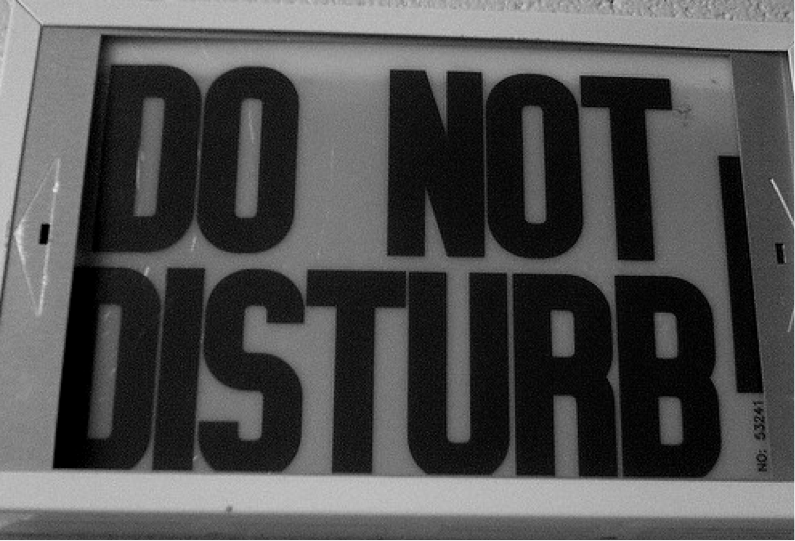Digital expectations of physical spaces

The potential of digital is for your environment to be one step ahead of your experience.
In our virtual environments and interactions we expect a high level of control over how our individual preferences are handled relative to the situation or the context we’re dealing with.
I don’t think we’ve yet seen this translated to most of our physical spaces and interactions.
When I walk into my local coffee shop, I still have to queue behind a counter and wait to be served. But what if using the device in my pocket, and recognising the patterns of my behaviour (i.e. I’m always in this coffee shop at 9:30am on a Thursday), there didn’t have to be a counter or a queue? I could just walk in and sit down. Coffee shops would become more like your living room.
What if the train I’m on knew I had a valid ticket (after all, it’s an app on my phone already)? This way I don’t need to be disturbed 2 or 3 times on the journey to have my ticket checked.
Until very recently, few physical spaces have interacted directly with our digital lives. This is starting to change with connected devices and voice activated devices in our homes, but this is still more unusual in the public spaces we spend time in, or when we visit private spaces like retail.
Preferences in a physical space
What if you could control your physical environment with a device like your smartphone? This is already possible. We have apps to control lighting and connected devices in our homes, but how might this extend to other physical spaces and experiences?
What if you could walk into any space with an invisible ‘do not disturb’ sign?
I like the idea that you could set a preference on your phone (do not disturb) that people then observe or respect in a physical space. This would work in shops if you didn’t want to be approached by a shop assistant or offered help – I always feel like I’m being sold to in these situations and it can feel uncomfortable.
My increasing expectation is that the types of settings I have in my virtual life (ie. the level of control I have over my apps or phone settings) should be applicable to something I can expect in physical spaces and interactions.
To extend this example, someone alone in a bar or restaurant might want to avoid unwanted attention. The bar staff could monitor individual statuses and intervene if required. This use of personal preferences in physical spaces could also work the other way. It could be a way of starting new interactions with people, or even, letting those around you know that you’re lonely or simply need someone to talk to.
I’m very interested in how a set of digital preferences and your previous interactions through a website, or internet-enabled device, might help to shape the experience you then have in a physical space as part of the same service. This is especially relevant for local government services, when someone mostly transacting with services online also needs some level of individual or face to face support – the sort of extension of a service that might be delivered in a physical space in a local community.
There’s a genuine challenge here for all organisations to be consistent with how they address people’s individual needs across all types of interactions within a wider service – whether it’s face to face support, or through an interface on a screen.
In areas of public service delivery like welfare this could be a genuine opportunity to treat people with the respect they deserve by applying greater attention to how people want to be treated and how they’re feeling. If respect and dignity are the default settings across all interactions, how else can you give people back a semblance of control in their lives?
Preferences across platforms
All of these types of interactions would need to be built on open, rather than closed, platforms. The thought of having to use Facebook to control my physical environment is a scary prospect. The danger here is powerful retailers and large internet businesses building closed spaces – you can imagine this happening in retail quite easily or having to download an app for every single store experience – no one wants that.
The potential of digital expectations applied to physical spaces is to give people control of their immediate environment and experience, to do so seamlessly and without interruption. Taking the opportunity to stay one step ahead of how people want to be supported, respected and treated.
This is my blog where I’ve been writing for 20 years. You can follow all of my posts by subscribing to this RSS feed. You can also find me on Bluesky and LinkedIn.